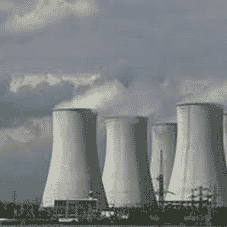
Pakistan Institute of Development Economics
- Home
Our Portals
MenuMenuMenuMenuMenuMenuMenu - ResearchMenuMenuMenuMenuMenuMenuMenu
- Discourse
- The PDR
- Our Researchers
- Academics
- Degree Verification
- Thesis Portal
- Our Portals

An Obstacle to Development: Pakistan’s Electric Power Sector
Several critical factors such as security, political uncertainty, shrinking market demand, and trade barriers among others are behind the lack of economic progress in Pakistan, however, the power sector is usually overlooked.
The economic progress of Pakistan can be compared with several countries in the region, most importantly India and Bangladesh. Pakistan’s biggest industry, textile exports dropped 9.22% to $ 12.4 billion in 2014, whereas Bangladesh gained 14.5% in textile exports the same year. Similarly, in Pakistan, many local and foreign companies are forced to shut down due to power shortages or relocate to other countries, mostly in the same region. Cheap and reliable electricity supply is a vital tool to attract foreign investment and help local industries grow. Especially for a country like Pakistan, whose neighbors India and Bangladesh offer lower electricity prices for manufacturers at USD 0.12 kWh and USD 0.09 kWh respectively compared to Pakistan’s USD 0.13 kWh and as a result, export significantly more than Pakistan.
Bangladesh, for example, is remodeling its power sector, and such development in the sector is even praised by the Asian Development Bank which ranked it the fastest growing economy in Asia-Pacific in 2019. The policy adopted by the Bangladeshi government is very simple; open the sector for private investors and independent power producers, a step that was highly criticized at first but in the end benefited the economy, pushing GDP from $102 billion to $274 billion in 10-years.
Similarly, India is not holding back any improvements in its power sector after facing several distributional challenges like Pakistan due to the centralized nature of its sector. India was helped by the World Bank in addressing issues ranging from easy electricity access to private sector participation and improved transparency. Consequently, India’s rank jumped to 24 in 2018 from 137 in 2014 on the World Bank’s Ease of doing business – “Getting Electricity” ranking. Energy deficit reduced to 0.7% in 2018 from 4.2% in 2014.
Pakistan has experimented with different policies in the past that were relatively successful but replaced by governments based on ideological differences. According to a World Bank report, Pakistan managed its energy crises in the 1990s by opening the sector to private sector, which added 4,500 MW from 20 independent power producers, resulting in a power surplus, attracted $5 billion in investment and increased electricity access to millions. However, due to government regulations on investment returns for producers, this success was short-lived.
Currently, Pakistan’s power situation seems relatively stable, mainly due to China as it is making sure that CPEC, an important part of its BRI project, is not negatively impacted. For that reason, energy takes up a large share of CPEC projects, accounting for 74% of the total cumulative cost of projects such as coal, solar, wind and hydroelectric. CPEC aims to add 17,000 megawatts to the national grid, which can decrease consumer cost, increase productivity, expand exports and boost Pakistan’s GDP. This addition of electricity capacity will certainly address power shortages in Pakistan, which usually cost the country on average 2-2.5%[1] of its GDP annually.
On the other hand, CPEC projects are not going to contribute towards environmental sustainability, rather they are only going to cause an increase carbon-emissions in the country as 75% of the projects are coal-fired, which scholars have criticized. Given that Pakistan’s neighbors are giving up on non-renewable for renewable energy, this not only stains the country’s international profile as a polluter but also will make the country reliant on a finite energy source. Additionally, the projects will certainly build up power capacity in the country but will not address problems such as power theft, bureaucratic hurdles, corruption, and power loss. Policy reform along the lines of Indian and Bangladesh examples is necessary for that.
The prime issue with the energy sector lies in management, corruption, electricity theft and transmission losses in a non-transparent supply chain. The government’s Central Power Purchase Agency (CPPA) purchases each unit produced by independent and state-owned, generation companies (GENCOs) and then sells them to state-owned power-distribution companies (DISCOs). Required to pay the CPPA, DISCOs usually fail to do so; and this results in CPPA failing to pay the GENCOs. In turn, the GENCOs are unable to pay the oil companies from whom they buy oil. GENCOs are eventually shuttered down when oil companies stop supplying oil, resulting in power shortages, high prices and a huge circular debt.
Power crises have escalated to new heights and ircular debt has reached billions of dollars. Pakistani policymakers need to design a new energy policy and should thoroughly consider deregulating power generation companies so they can reach a market price level without government interference. Deregulating will prevent corruption and electricity theft while improving the collection of electricity bills and reduce the circular debt.
Privatization in the power sector will make government workers accountable for their inefficiencies and mismanagement. Another reason to support privatization is that it will save Pakistan the power lost through old transmission lines, and outdated equipment, as private companies will invest incredibly more generously and effectively than the government on power infrastructure, leading to an efficient power sector.
In conclusion, this issue is usually taken lightly compared to other factors such as security, human rights, climate change, and political uncertainty. However, it is time to realize that issues in the energy sector are not only related to the economic stability of a country but its national security, foreign policy, job market, and climate policy. Stakeholders in the sector need to find a detailed and sustainable fix for the sector that can drive Pakistan towards a prosperous future.
[1] and occasionally climb up to 7% of GDP.
Download full PDF


